Clear coat spots stick out like a sore thumb, and as an enthusiast, they’re annoying to look at!
They usually have rough edges which really detracts from the overall look of the car. Not to mention the loss of a protective layer over your actual paint. So can anything be done to fix this, and if so, how can you do that?
In this guide, we are going to go over what a clear coat is and how it works so you understand how it can be spot repaired or even permanently restored.
A Primer on Clear Coat
It is very important to understand the fundamentals of automotive paint and protection before you start doing any detailing work, which includes spot repairing your clear coat.
There are two main things about your car’s paint job:
- It is not perfect; it is impossible to keep it 100% clean at all times if you drive it and,
- Your vehicle only has so much clear coat and paint applied; it is not an infinite resource.
So what does this mean? Essentially, it means that your car has a certain amount of paint and clear coat applied over the primered metal. From bottom to top, cars typically have the metal panel, primer, base coat, or color, and clear coat.
Not all cars come off the factory line with the same amount of clear coat, either. Not to mention different manufacturers have varying degrees of paint strength.
For instance, Nissan is known to have softer paint, while BMW is known for having harder paint.
In other words, your starting point for a car depends on the exact make and model you have. In addition to differences in stock paint jobs, you have to consider the age of the car and how it has been treated.

Cars that have been garaged their whole lives will have a better clear coat and paint condition, generally, than cars that are parked outdoors and exposed to the sun along with other elements.
Professional detailers use a tool called a paint thickness gauge, which measures how thick the clear coat and paint are. This helps them determine how much they can remove safely, or if it ought to be removed at all.
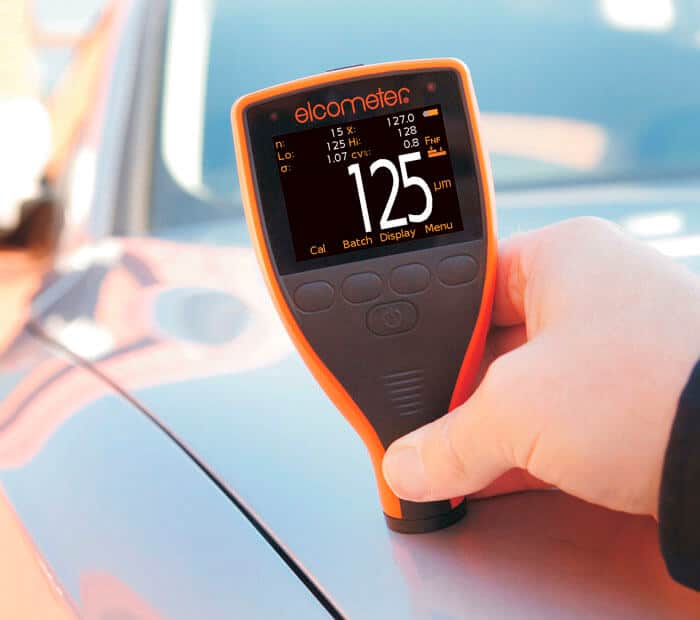
Remember that there is only so much clear coat on a car, so at some point, it might be harmful to compound and polish a vehicle if it has too little clear coat remaining, even if the vehicle has swirl marks and other paint imperfections.
In sum, clear coat will inevitably wear down with time, and some will strip away when more abrasive detailing is performed, like clay barring or compounding.
However, there are protective, preventative steps you can take to slow down this process. Unfortunately, if you have peeling clear coat, you are past the point of prevention and have to move on to repairing.
Consider investing in cleaning equipment and give your car a thorough wash down at least once to twice every depending on how use it. Tools like automotive pressure washers and floor containment mats will make the job a lot easier.
How to Spot Repair Clear Coat
You can spot repair your clear coat, but it is important to acknowledge that this is a temporary fix.
Applying clear coat over the peeled spots will not adhere to the base color coat as well as it did during the original application at the factory.
This is because of a set of chemical properties at play during the original paint job, and unfortunately, the base coat, once exposed to the elements, has been compromised.
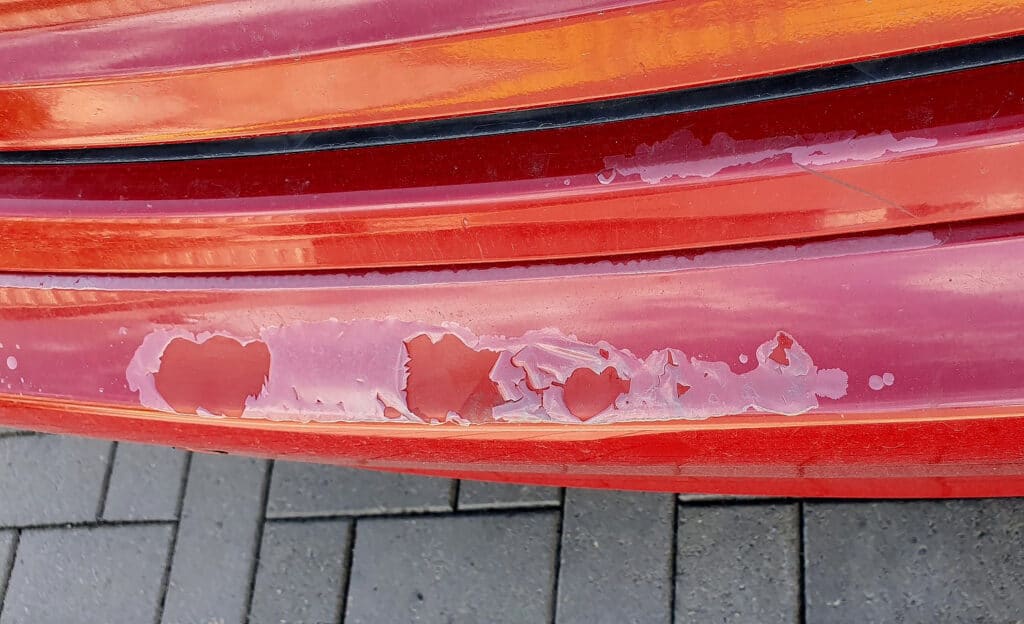
So the spot repair will fail again, and it will not restore the clear coat to a like-new finish.
However, it is a temporary way of at least moderately improving your vehicle’s appearance, as well as providing some protection to the exposed base coat (although the base coat is also somewhat weakened after the clear coat peeled away).
Ideally, you catch peeling clear coat early on, before the base coat has suffered too much from exposure.
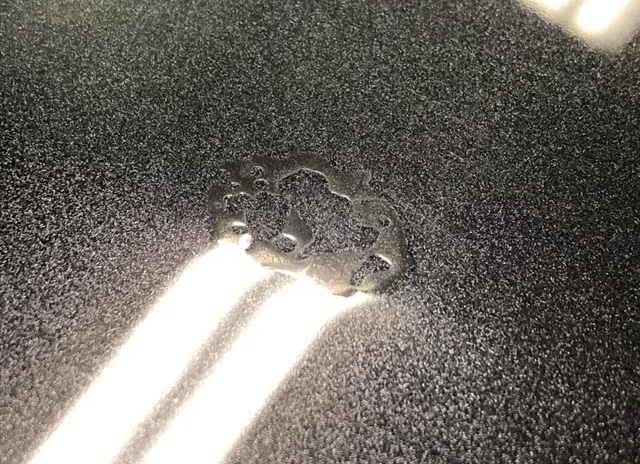
This will ensure a better result than trying to spot repair clear coat that has been sitting for months or even years.
Here is a method you can use for spot repair:
- Clean the area: Use isopropyl alcohol or similar to ensure you remove all dirt and debris from the affected region.
- Scuff it up: Use a fine non-woven pad to rub down the area and the surrounding panel, up to about 1 inch all around.
- Clean again: Wipe things down after you have applied your non-woven pad.
- Prepare the area: You can use painter’s tape to protect the rest of the panel.
- Apply clear coat: It is recommended to use a 2K clear coat spray rather than a 1K for better results. Be sure to wear a mask to avoid breathing in the fumes.
- Wait for it to dry: 2K clear coat dries quickly, so check on it after about 5 minutes. Once dry, apply another coat of 2K.
- Remove tape: You will see how good the repair looks, and can work on blending it.
- Sand it: Use 2,000 grit sandpaper on the newly repaired spot.
- Polish it: Next, you polish the area to effectively blend it. It is ideal to use a buffer for this, but if you do not have one, you can do so by hand.
A note on hand polishing: be aware that the results might not be as good as they would be with a buffer tool. If you do use a buffer, be sure to apply light pressure and use low settings. This is a delicate, not aggressive, job.
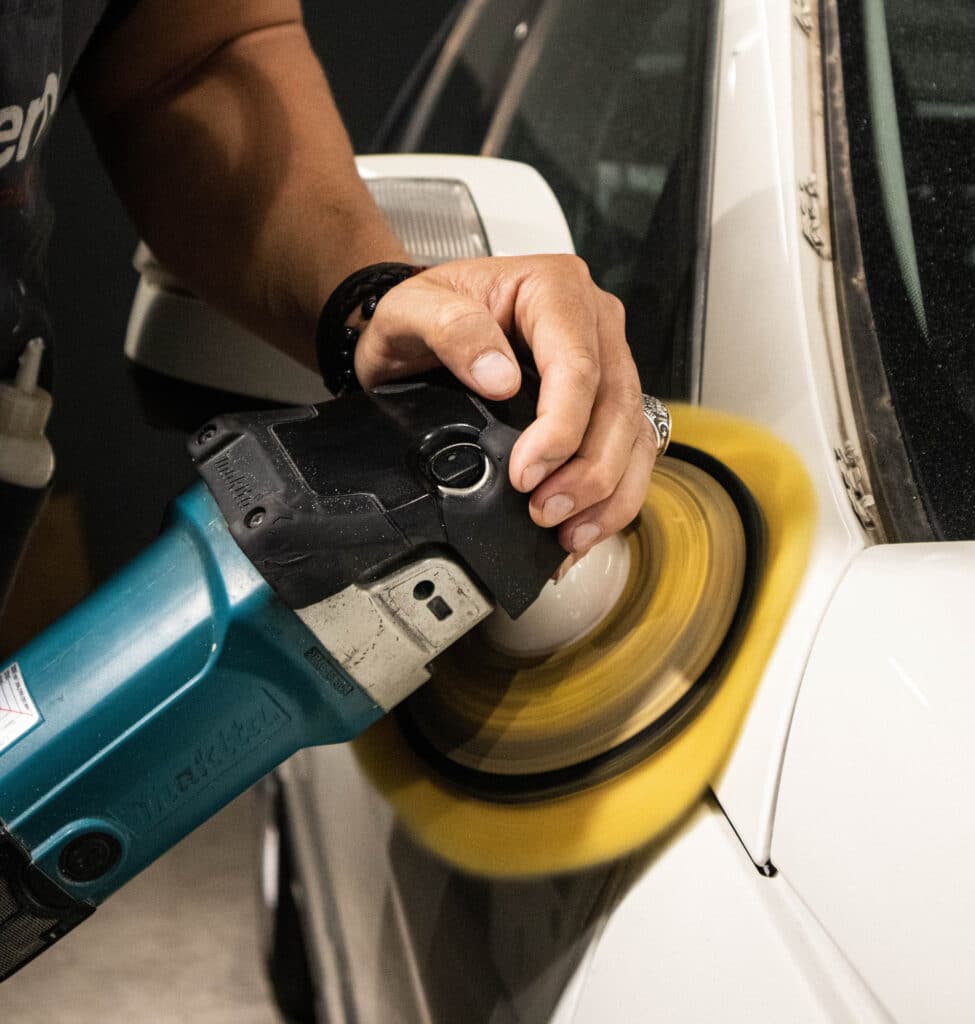
How to Restore Clear Coat Permanently
The only way to truly restore your peeling clear coat is by starting over. This means having the body panel stripped down and repainted entirely.
Because this effectively removes all the original paint, of course, this is not really a repair at all, but more like a replacement.
Also, this method is considered permanent in that it is not a short-term clear coat fix, like a spot repair. However, it is inevitable that the newly applied clear coat will eventually fail, especially if it’s left to the elements in a harsh climate.
The goal is that this should take many years, if not decades, provided your car is well taken care of.

A good paint job is usually not something do-it-yourselfers can readily do, due to the nature of the job itself. You really need an environment without contaminants, and your driveway cannot provide this.
If, of course, you have the proper tools, or have access to the proper tools and a space to work in, you can do this.
Most of the time, however, this will involve going to a professional shop. This will get you flawless results; you will have no evidence of the prior clear coat problem because you will have all new paint and clear coat applied.
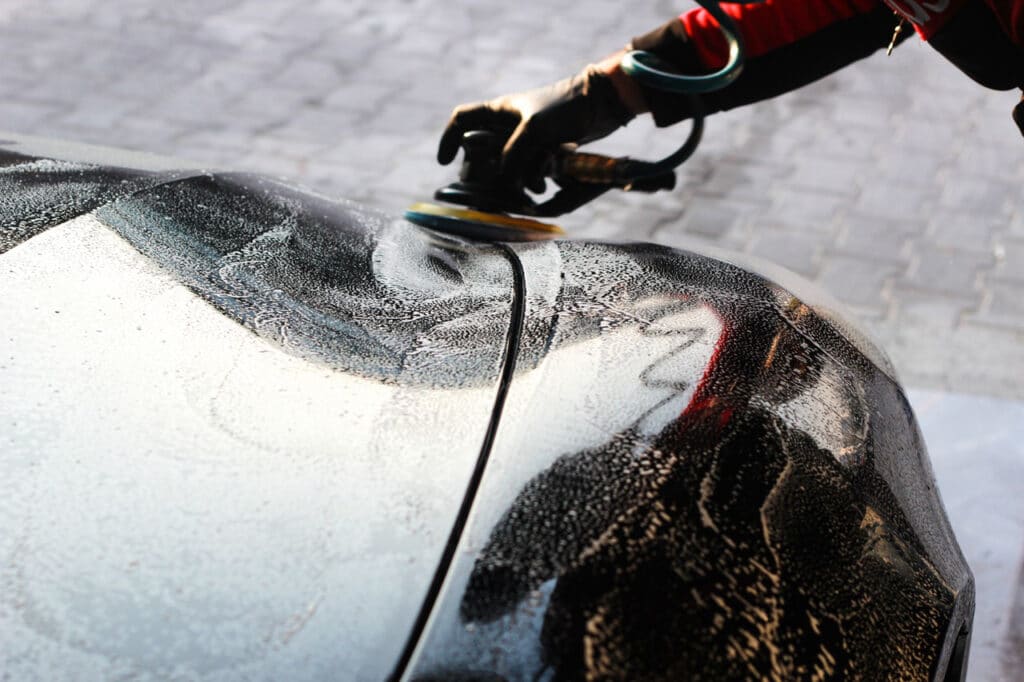
The biggest disadvantage here is that this method is significantly more expensive than performing a spot repair yourself.
Another alternative is to get your car wrapped. Car wrap costs are quite reasonable in contrast to a professional paint job.
Concluding Notes
Whether or not it is worth it to get your clear coat professionally restored depends on how large the defects are, the value of the vehicle, and your personal wants.
For example, most people don’t want to invest in a professional clear coat spot repair job for their winter beater, because it is not their main vehicle and is often not worth much, to begin with.
If you have a tuner car that you are preparing to put into a show on the other hand, you are most likely going to want to invest in the highest quality work to get the best finish on your car.
What’s your preferred method to spot repair your clear coat? Let us know by leaving a comment below.

